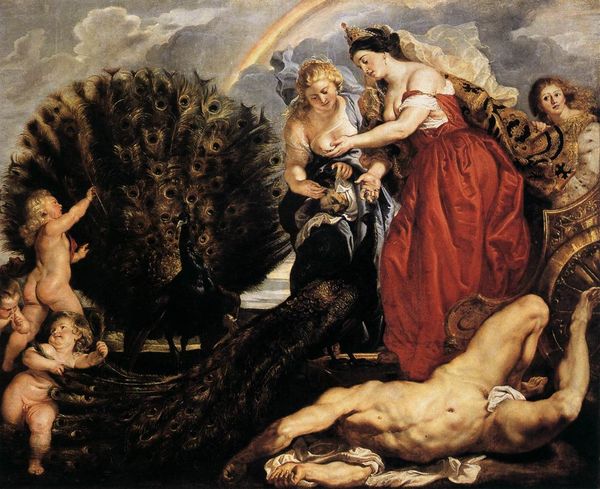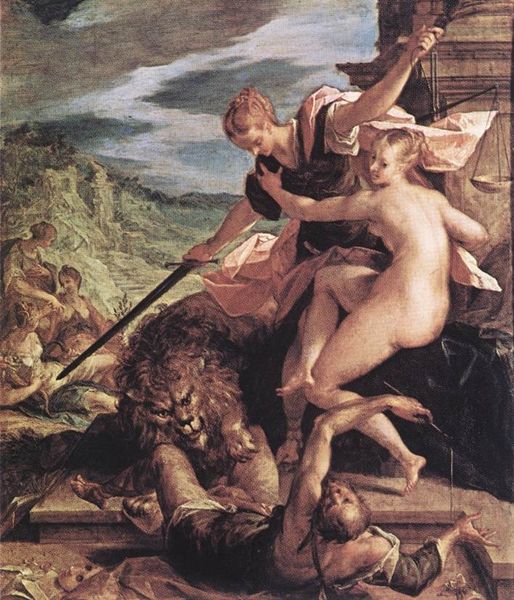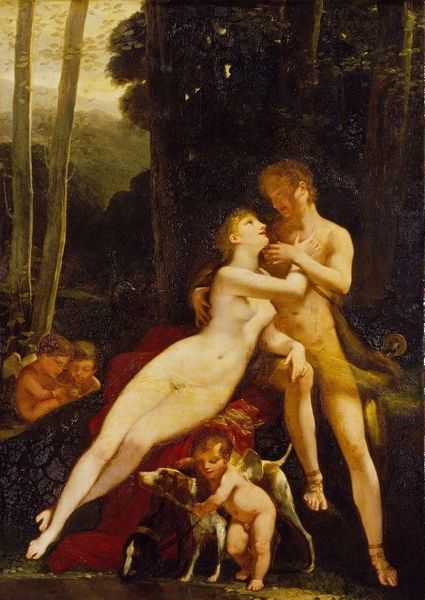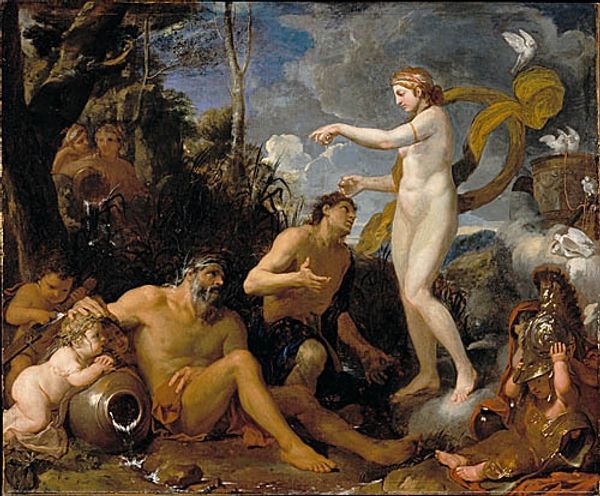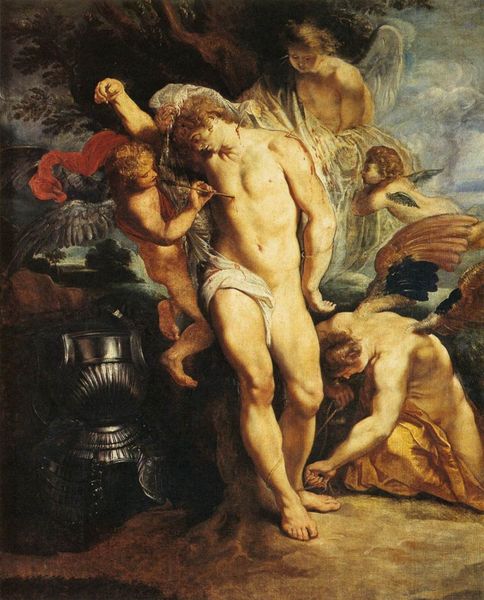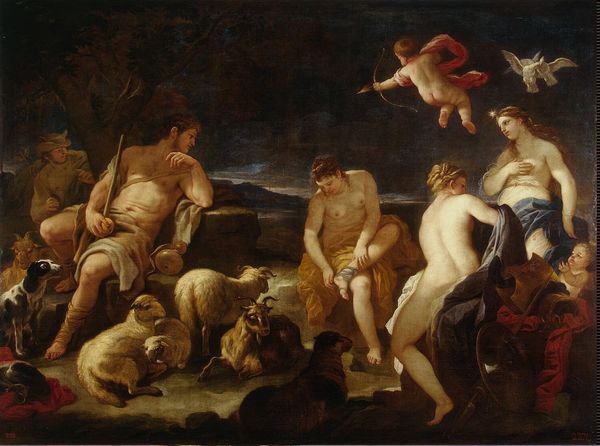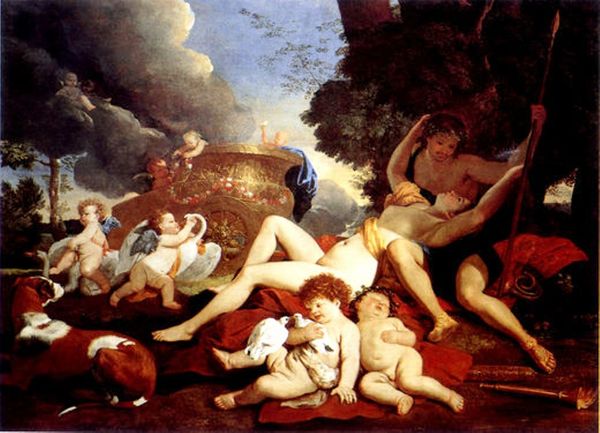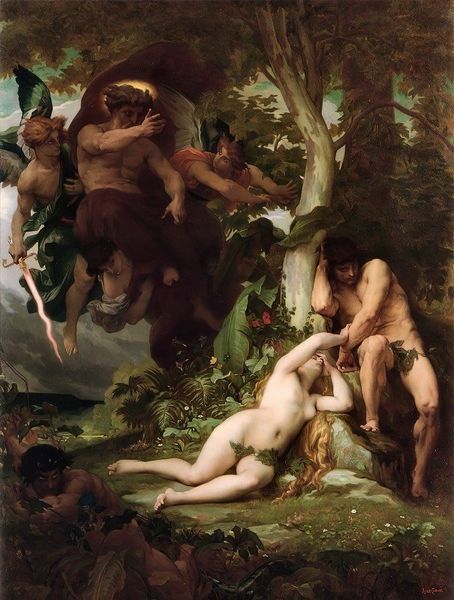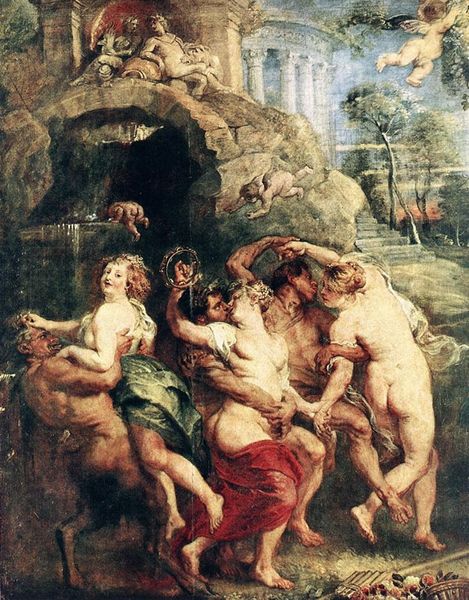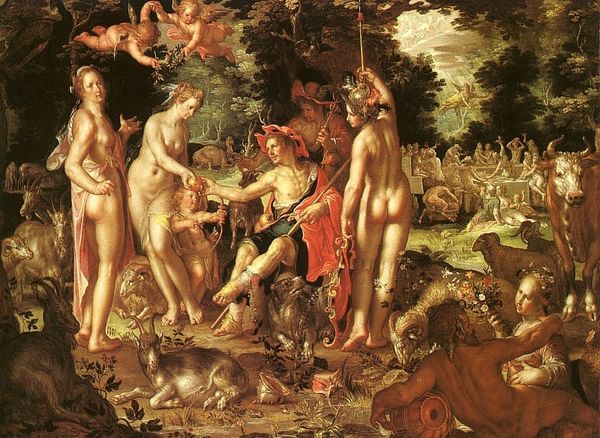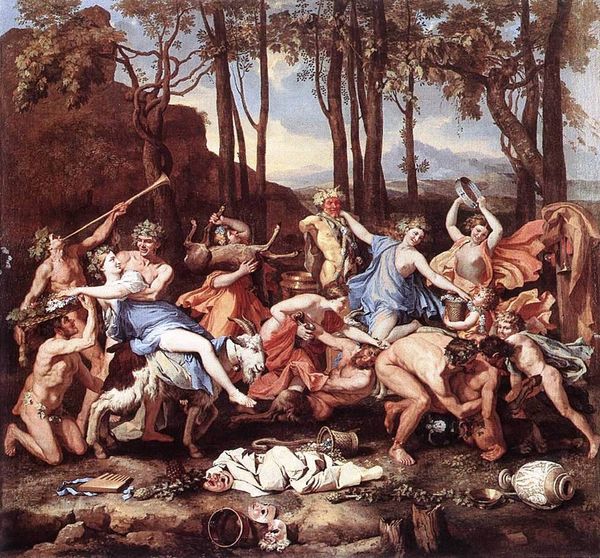
painting, oil-paint
#
allegory
#
baroque
#
fantasy art
#
painting
#
oil-paint
#
landscape
#
figuration
#
roman-mythology
#
mythology
#
history-painting
Dimensions: 96 x 75 cm
Copyright: Public domain
Curator: Ah, yes. Here we have Nicolas Poussin’s “Bacchic Scene” from 1627, rendered in oil paint. A beautiful example of his early work, wouldn't you agree? Editor: First impression? Deliciously chaotic. It’s like stumbling upon a tipsy picnic in the woods. The light feels very theatrical—almost staged, as though the trees are the curtains. Curator: Indeed, Poussin orchestrates a classical composition, even amidst the apparent revelry. Observe how he manipulates light and shadow, particularly on the figures' skin. Notice the intentional positioning and how each gesture reinforces the overall narrative. This isn't just randomness; it’s a carefully considered arrangement that invokes Roman mythology. Editor: Orchestrated chaos. I love that! It reminds me of how a jazz ensemble feels both totally free and perfectly in sync. The little cherub, for instance, striking out on its own is utterly charming, with his prop arrows. It creates a beautiful disjunction, a tiny counterpoint to the Bacchanal unfolding around him. Curator: Precisely. The cherub introduces an allegorical element. A playful juxtaposition perhaps indicative of a deeper symbolic interpretation of innocent pleasure amidst nature's abandon. The robust figures, rendered in rich tones, express a powerful sensuality indicative of Poussin's mastery of the Baroque style, although with his distinct classical structure. Editor: You can almost smell the ripe grapes and feel the thumping of the drums. It feels…intoxicating. There's a vulnerability, too, despite all the swagger, in that unguarded moment. Makes me want to reach through time and join them! It's a painting that understands joy is fleeting, isn’t it? Curator: Very good. I see your intuitive reading allows for a different entry point. From a technical perspective, one may look to the dynamic equilibrium of diagonals or perhaps his sophisticated employment of contrapposto. The figures support each other formally as well as thematically. Editor: Ultimately, I find myself pulled into their orbit. “Bacchic Scene” isn’t just a painting to admire. It’s an invitation to participate. Curator: Well articulated. Perhaps that is Poussin's greatest success here—offering us the opportunity to dissect not only classical forms but a timeless aspect of human celebration. Editor: To the revelry of analysis, then!
Comments
No comments
Be the first to comment and join the conversation on the ultimate creative platform.

